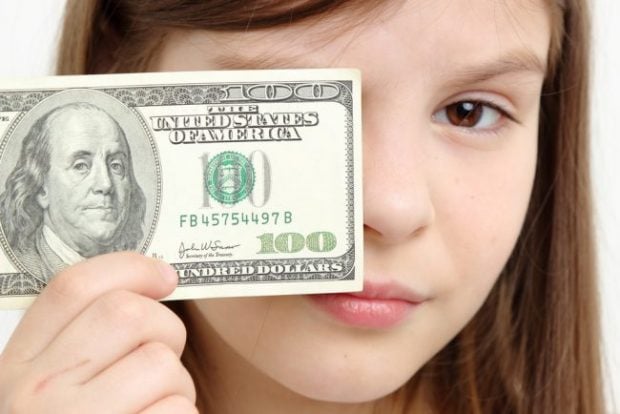 Source: Shutterstock.
Source: Shutterstock.
An Experian report showed credit unions lost their top place in auto finance in the first quarter as their share of total financing fell for the second quarter in a row, as captive lenders gained.
Experian's quarterly "State of the Automotive Finance Market" report released Thursday showed credit unions accounted for 24.5% of the number of loans and leases in the first quarter, dropping them to third place among lender types behind captives and banks.
Recommended For You
Credit unions had been the leading lender type for the previous two quarters with shares of 26.9% in the fourth quarter and a high of 28.4% in 2022's third quarter.
Captives gained the leading share with 26.6% of total financing in the first quarter. Their share rose from a low of 21.9% in 2022's third quarter and 24.4% in the fourth quarter. Banks were the second-largest lender type with a 26.0% share.
Credit union market shares slipped for both new and used cars from the fourth to the first quarter, but the drop was greatest in the new car market.
Credit unions' share of new car loans and leases was 16.5% in the first quarter, compared with 20.3% in the previous quarter and a high of 23.7% in 2022's third quarter.

Captive lenders claimed the gains in new car loans in the last two quarters. Their share was 54.1% in the first quarter, up from 48.4% in the fourth quarter and 44.2% in the third quarter.
Banks' new car financing share has slid for the past four quarters, holding at 23.2% in the first quarter.
Credit unions were more resilient in the used car market where they have long been a dominant player.
Their share slipped in the past two quarters, but by a smaller amount than the new car market. They generated 29.8% of used car loans in the first quarter, compared with 31.2% in the fourth quarter and a high of 31.5% in the third quarter.
Credit unions lost used car lending share to captives in the fourth quarter and banks in the first quarter. Banks' share was 27.9% in the first quarter, up 27.2% in the fourth quarter. Captives, finance companies and others made gains of 2.2 percentage points over the past two quarters.
Data from the Fed and CUNA showed credit unions continued to gain share of the nation's total auto loan balances in the first quarter. But while many banks and other lenders regularly sell their loans, only six credit unions have sold auto-loan backed securities. The most recent was a $300 million sale by Veridian Credit Union ($6.95 billion in assets, 319,961 members) that closed May 30.
The report by Experian automotive analyst Melinda Zabritski showed delinquencies rose slightly above pre-pandemic levels for all lenders.
At the end of March, 0.88% of the value of auto loans was at least 60 days late, up from a delinquency rate of 0.69 a year earlier and 0.83% in March 2019. Thirty-day-plus delinquency rates also rose from a year earlier, but were 28 bps lower than in March 2019.
Leasing fell to 18.2% of new vehicles financed, down from 21.7% a year earlier and 27.9% two years earlier. However, leasing of used vehicles is rising: 11.2% of vehicles financed in the first quarter, up from 10.0% a year earlier and 9.7% two years earlier.
Experian showed borrowers' credit scores have been rising since at least 2018 and remain above the threshold of 661 for prime. The averages were 742 for new in the first quarter, up from 736 a year earlier and 727 in 2018. Used was 677, up from 669 and 647 in 2018.
The average monthly payment on a new car loan was $725 in the first quarter, up 11.5% from a year earlier.
The main driver was interest rates, which averaged 6.58% for new cars in the first quarter, up from 4.10% a year earlier and 5.54% in March 2019.
Terms have slightly shortened over the past three years. They fell from 69.9 months in 2020's first quarter to 68.6 months in this year's first quarter.
Price gains have slowed. The average amount financed for a new car was $40,851 in the first quarter, up 3.1% from a year earlier and down 1.4% from the fourth quarter. Financed amounts had risen 12% from March 2021 to March 2022.
The percentage of new car loans with terms of six years or more fell from 38.2% in 2022's first quarter to 34.0% in this year's first quarter.
The average monthly payment on a used car loan was $516 in the first quarter, up 2.2% from a year earlier. Payments had risen 22% over the previous 12 months — from 2021's first quarter to 2022's first quarter.
While used car loan interest rates rose sharply, amounts financed fell. Interest rates averaged 11.17% in the first quarter, up from 8.67% a year earlier and 9.34% in March 2019.
The average amount borrowed for a used car was $26,420 in the first quarter, down 5.7% from a year earlier. Loan amounts had risen 25% from March 2021 to March 2022.
Terms fell slightly last year after rising since at least 2019. The average used car loan carried a 67.4 month term in the first quarter, down 21 basis points from a year earlier, but up from 64.5 months in the first quarter of 2019.
© 2025 ALM Global, LLC, All Rights Reserved. Request academic re-use from www.copyright.com. All other uses, submit a request to [email protected]. For more information visit Asset & Logo Licensing.






